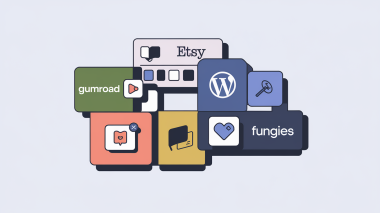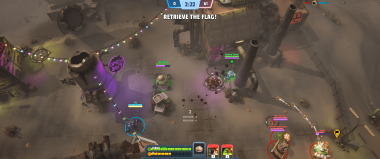We are just starting to unravel the wide universe of the crypto world. Games based on the blockchain are just now starting to turn heads as developers rush out to make the next big thing in blockchain gaming. There are already dozens upon dozens of blockchain games on the market as the crypto verse starts to mature.
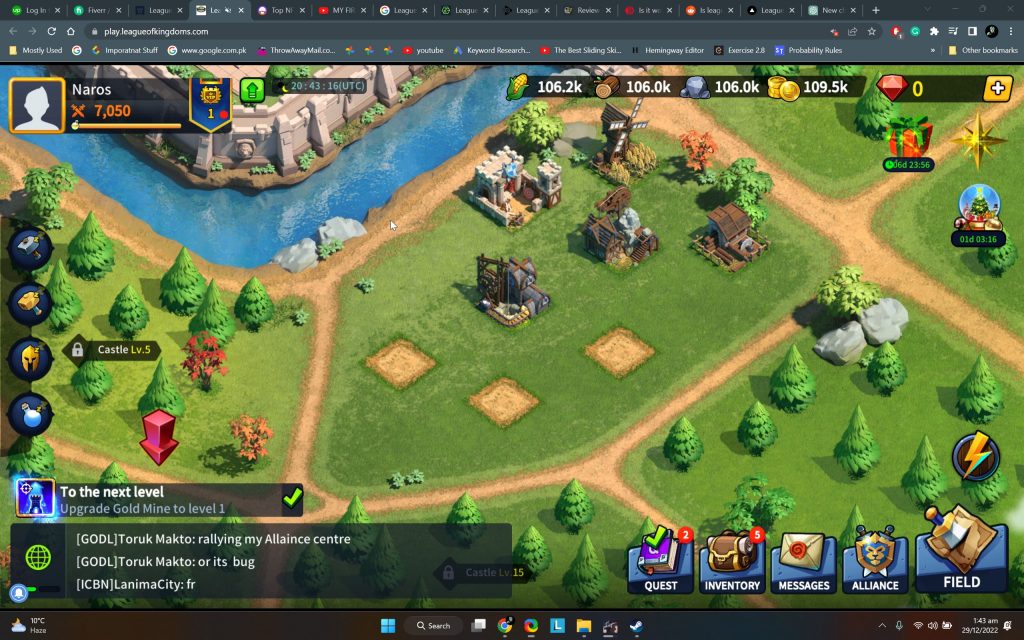
League of Kingdoms is one of the many blockchain games looking to make a name for itself. Today we will be reviewing the game both from a gameplay perspective as well as a play-to-earn perspective. As play-to-earn is at the core of many blockchain-based games. As it attracts lots of players looking to make some extra change while also enjoying themselves.
The concept of play-to-earn is still in its very early stages, so its implementation in games like League of Kingdoms might be a little crude at first. But as time passes developers will slowly learn from feedback what works and what doesn’t.
But let’s not get ahead of ourselves! Let’s dive deep into the world of the League of Kings and see what it brings to the table.
Establishing your own Kingdom
I would be lying if I said League of Kingdoms is a totally unique theme and concept. In fact, you would easily find hundreds of similar MMO games on the market right now. If you have played games like Clash of Clans or its many clones, you would feel right at home. Because at the core League of Kingdoms is just that but with a blockchain twist.
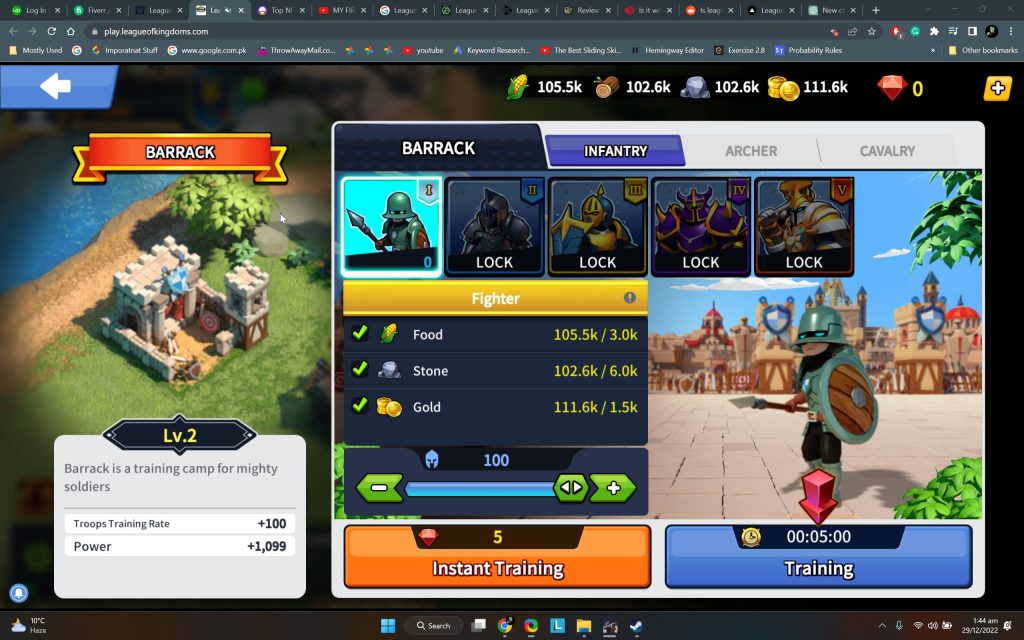
While at the surface it might look like any run-of-the-mill mobile MMO, there is a deeper layer to the game. And that is the blockchain layer. Two important game mechanics in the league of kingdoms are powered by the blockchain. Firstly, the resources you collect in the game while managing your kingdom can be minted into tradable NFTs. These NFTs can then be sold to other players that can buy these resources from you as resource packages and spend them on their kingdoms.
The NFTS can be traded via OpenSea and there is a considerable community on opensea built around it.
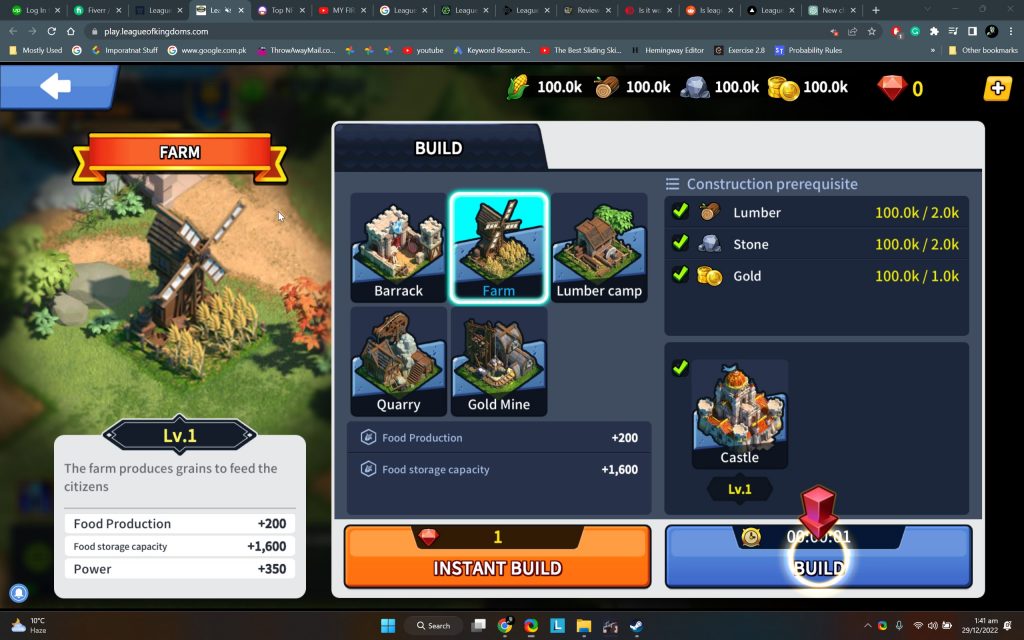
The second blockchain aspect of the league of kingdoms is the land token. Basically, each parcel of land that exists in the league of kingdoms is owned and traded by players. This adds a unique twist to the game. The land in the league of legends is a unique digital asset that players can own. In total there are 65,536 plots of land that can be owned. The land can be bought using Ethereum and you own it by owning an Ethereum NFT for the land.
Starting out
League of Kingdoms is available on both mobile as well as browsers. So, it gains grace points for being accessible. You start by making a league of kingdoms account and then linking your crypto wallet (albeit this can also be done at a later stage).
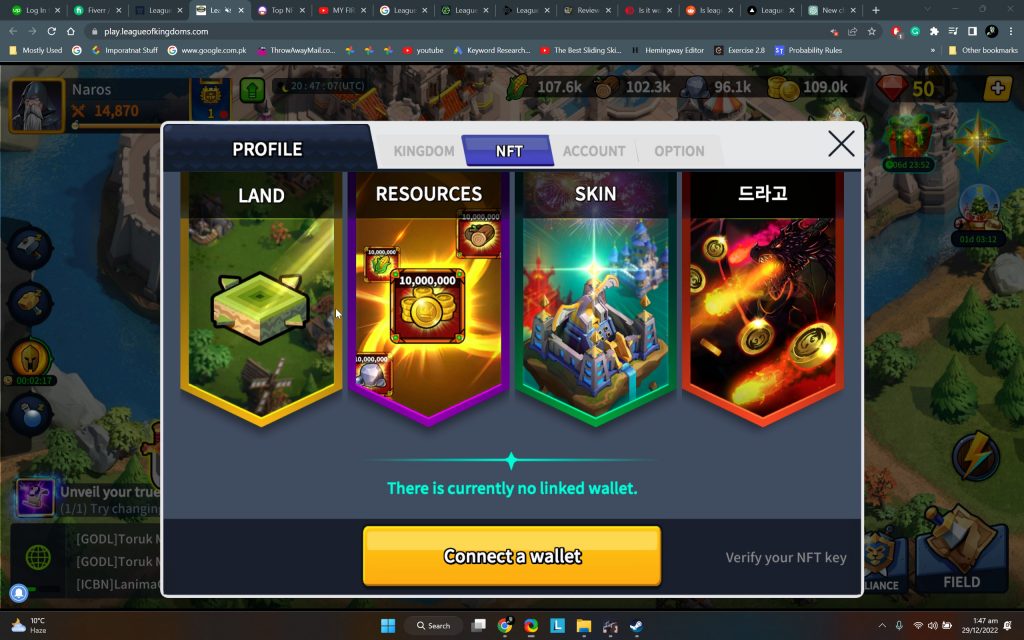
You start out with a small cutscene setting up the universe. But it’s a pretty basic and vanilla fantasy world scene that you can skip without worrying that you are missing out on massive lore for the game. After that, you are dropped into the game with a tutorial.
The tutorial is basic and teaches you a bunch of different things that you need to know about managing your kingdom. You start off by building resource-gathering buildings like lumberjacks, quarries, and farms. Each of these buildings slowly generates resources. Resources as we previously learned can be sold as NFTs to other players on opensea.
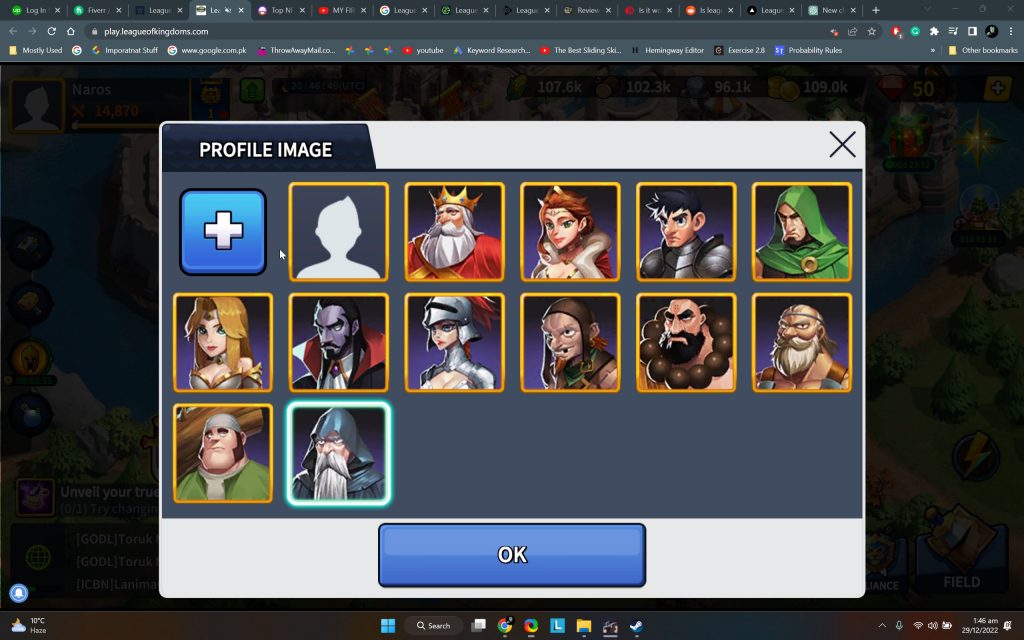
Managing Resources
The resources in the game are Lumber, Corn, Gold, Stone, and Crystals. Resources are used to upgrade different buildings like your castle, walls, or even resource-gathering buildings.
Resources are also vital for training an Army for the barracks for your future incursions with other players. Collecting 100,000 of any resource on a piece of land will earn you a development point. You can use this to upgrade your land.
Resources can be used for a variety of things in your kingdom. You can use them to upgrade your buildings, from castles to your barracks. You also need resources to train your army and prepare for war. But in typical online free-to-play MMO fashion, as you progress more and more in the game. Everything starts to take more and more time to do.
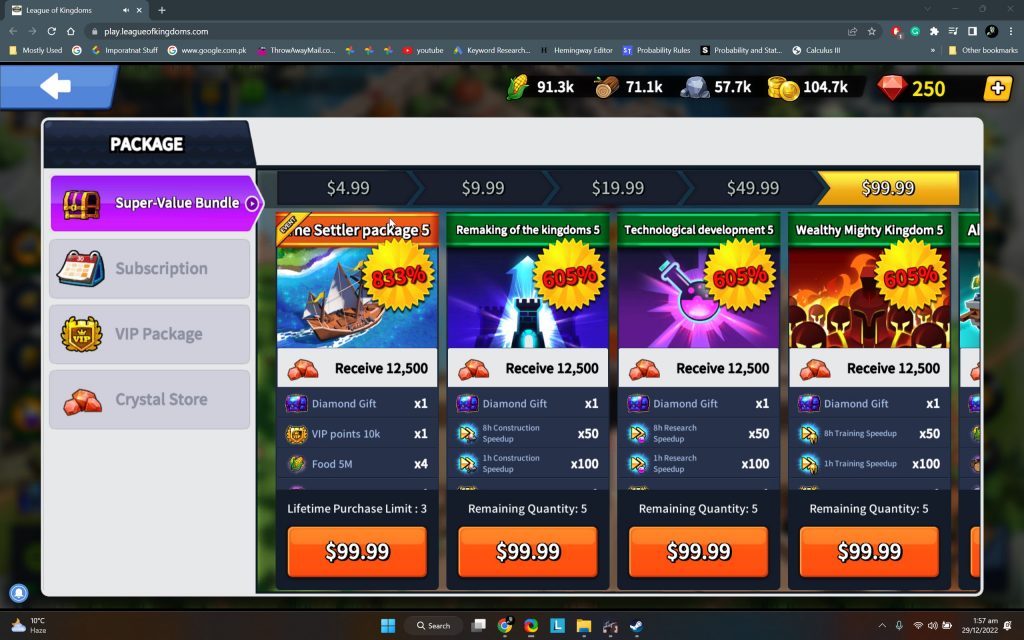
If upgrading your castle to level 2 took 30 seconds. Level 10 might take a few hours and then even days. It’s all part of the freemium model of these games. I hold nothing against it, almost all games in this space are doing the same. This is done in order to get players to buy various options to increase the speed of these tasks and is a main source of revenue for the developers as the game is free to play.
But this kind of model can turn nasty if it’s not done properly. I talk more about this in the gameplay section of this review.
Forming Alliances
Forging alliances with other players and effectively other kingdoms is at the heart of League of Kingdoms. When you start off the game, you are given 72 hours of protection. This allows you to settle into the game and learn the ropes. But as soon as this grace period ends, all hell breaks loose. You will have different kingdoms attacking you nonstop. Your army and defenses will be stretched pretty thin, pretty fast.
The best way to protect yourself from all this is to either create or join an alliance. Alliance is a clan of different players that can come to your aid in times of need. And they are absolutely crucial if you need to survive.
Joining an alliance is not only beneficial from a safety point of view but it also allows you to connect to other players and socialize with them. You can help each other to build together and even scheme combined attacks against other players.
And it goes without saying but joining an already established alliance is easier than making your own. Erecting an alliance from the ground up is a daunting task and you will need to attract a lot of players if you want your alliance to stand a chance against other alliances in the competitive scene.
Alliance works together for the same end goal and that is to quire shrine. This is a place in the game where you can get rewards like boosted health, speed, and even reduced death rates for different units. Whoever controls shrines obviously gets a massive advantage over their peers. So, it’s a highly contested location. Depending upon how high the shrine tier is, players can end up spending millions of troops to defend shrines against invading enemies.
Play-to-earn Potential
Let’s get into the reason why you might be interested in the game. Because the lore and the gameplay aren’t a good enough reason. That is the play-to-earnthe potential of this game. The game is based on the Ethereum blockchain and uses smart contracts.
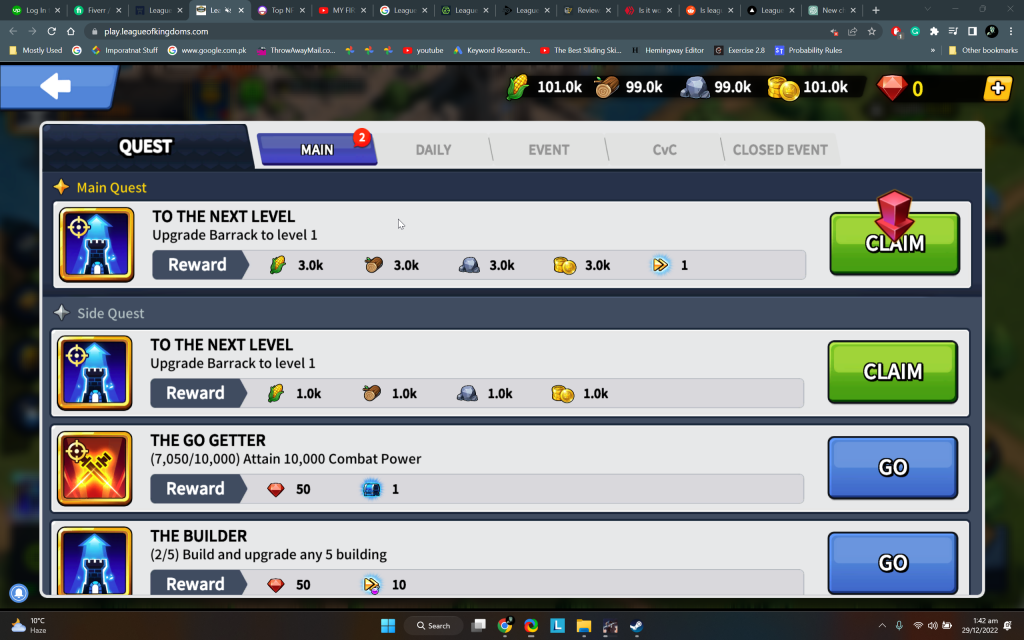
The first thing you can do is farm resources and then make them into NFTs. These NFTs can then be subsequently sold to other players via the opensea marketplace. Other players can buy your bundled-up resources packs and then sell them to other players.
The issue with this is that this doesn’t always turn out as profitable as it seems. This is because you guessed it, gas prices. High gas prices eat into anything you might have made from selling your hard-farmed resources on the market.
Another play-to-earn potential is the land-owning mechanics in League of Kingdoms. You can own land via land tokens. Each land has a 4×4 scale and can hold up to 16 kingdoms. Land can be owned and traded by players. Each piece of land has a development level that can be upgraded with development points. If there are kingdoms active on the owned land, then the owner of that land both gains in-game resources as well as DAI. DAI is the stablecoin on the Ethereum blockchain. You can then trade in DAI for any other stablecoin or plain old US dollars via your wallet.
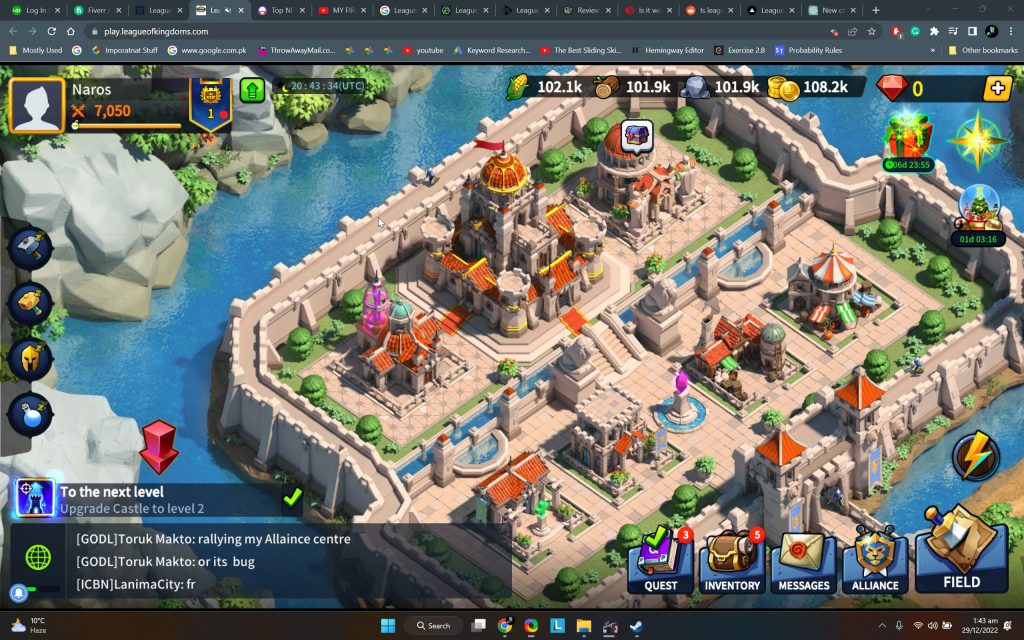
So basically, if you own land, you are earning DAI as rent from all the kingdoms established on your land. This is a potential revenue stream. But it would require you to own lots of land and people to actually make a kingdom on your owned tiles. How viable it is as a passive earning stream, well not much if you don’t want to grind all day.
Verdict
The game is a shallow copy of dozens of other similar games in the market. The only unique thing about is the fact that it is a blockchain-based game and there is some play-to-earnpotential to it. That is the only reason you would even consider spending your valuable time on this game. The final score for this game would be a solid 5/10. The gameplay is bland and offers nothing new. The lore and overall appeal are as generic as it gets. And if it wasn’t for the play-to-earn aspect of the game, it would even be worth reviewing the game.

